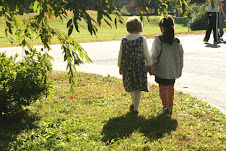The theme of next Monday's walk-and-talk is a look at the roots of the current mainstream system of schooling here in Kingston. For the founding of Kingston Sudbury-model school to be recognized as worthwhile, it's helpful to understand the dynamics that lead the mainstream system to be what it is.
The current system was designed largely to assimilate immigrants, and to prepare farm children for industrial-age jobs. Egerton Ryerson, the founder of the system, was explicit about this. Trying to adapt this system to a time when we value, rather than assimilate, diverse cultures, when we are preparing children for 21st century jobs rather than for industrial-age jobs, is risky.
Adapting old forms to new purposes can work. Witness old warehouses becoming loft apartments. But it wasn't the original manufacturers who found another use for those warehouses - it took a fresh look to see the opportunity. And there also remain today tracts of ill-used warehouses, unable to be renovated because of arcane laws. Was our schooling system originally set up to effectively adapt to change?
Egerton Ryerson set up our schooling system so that power was centralized in the hands of one authority, namely Egerton Ryerson. And he, as an ardent missionary and minister, humbly believed that all of his work came under the authority of an all-powerful god. Obedience was a fundamental value, and it was built into the core of the system.
Obedience can be simply a means to an end. When I told a group of scientifically-curious 15-year-olds that they could come near an open tank of liquid nitrogen, but only if they obeyed me fully, they were happy to comply. People are equally willing to obey when it is required to hold a job. But obedience is no longer considered a fundamental value in our culture. Or perhaps I should say in our multiculture. We value navigating and supporting our differences, not forming ourselves to the will of the most powerful.
(I speak only of our civic culture. Many of us, in our religious lives, have been a part of, and continue to be a part of, communities that believe that all authority has divine origin)
One aspect of this shift towards, if I may, democracy, is that in some local mainstream schools, people are being trained to talk through interpersonal conflicts, hearing each other as equals. This includes both students and teachers. This nascent aspect of equality is in contrast to the school system's current structure, still like the original, of following a curriculum imposed from an outside authority.
Do we have today a system that has improved upon the original? Or have adjustments to the monolith created a patchwork of features that get in each other's way? That's a question for another day. Today's point is that the core features of the original system remain, features that are not only no longer relevant, but are in opposition to today's goals.
Public schools have enough challenges today - funding, politics, adapting to a diverse body of students - that are all the more challenging when trying to make use of an out-of-date structure.
Sudbury-model schools were designed after a fresh look at what was needed. Kingston needs schools designed for the 21st century.
Subscribe to:
Post Comments (Atom)

No comments:
Post a Comment